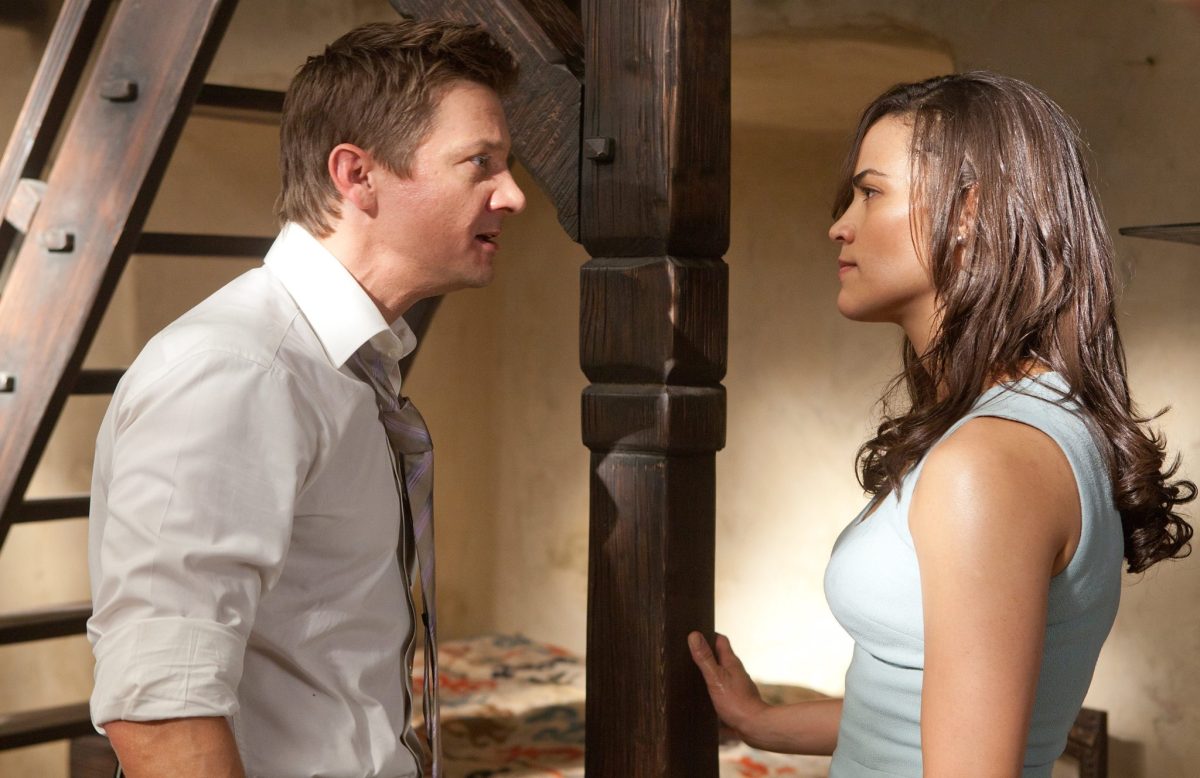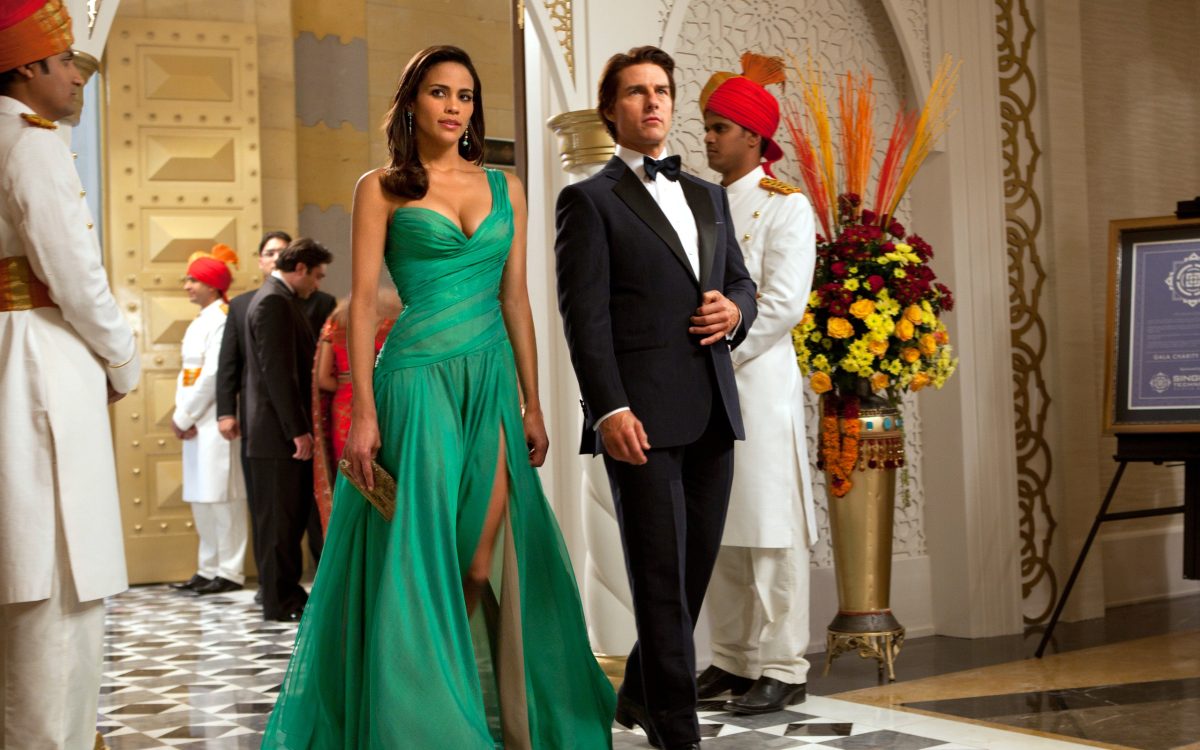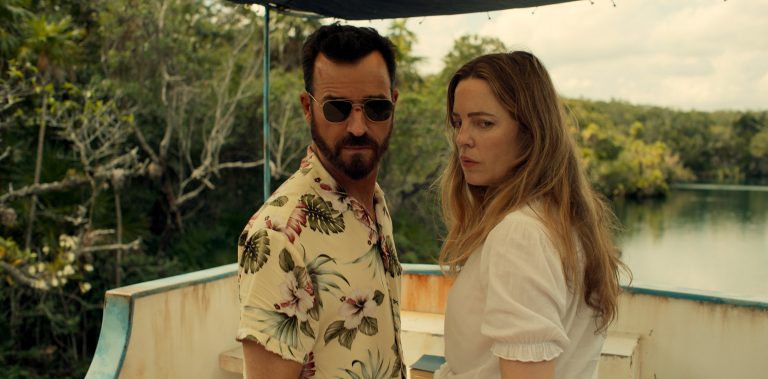Directed by Brad Bird, fresh off his remarkable stint with Pixar’s “The Incredibles” and marking his live-action debut, “Mission: Impossible 4 – Ghost Protocol” (2011) is the first movie in the beloved franchise that’s as rewarding to dissect as it is to watch. Mainstream espionage cinema, when coded into the nuanced circuitry of a franchise built on familiar rhythms, often suffers from a certain sameness, however effective that may be. Thematic loops resurface with each installment. In that sense, “Ghost Protocol” arrives with a rare and thoroughly entertaining distinction.
It’s a beautifully engineered action thriller that injects colour, vibrancy, and a refreshing urgency into the template, alongside the kind of tonal agility and humour the franchise desperately needed. As the first Mission: Impossible film to adopt the IMAX format, it justifies every minute of its big-screen scale: the action set-pieces—especially Cruise’s vertigo-inducing climb of the Burj Khalifa and his visceral showdown with the late Michael Nyqvist—are built to be passed down across generations, making even a small-screen rewatch feel like a teaser for something epic.
Like the most fearless and breathtaking entries in Cruise’s filmography, “Ghost Protocol” demands attention—not just for the spectacle, but for the luminous stubbornness of a man who insists on doing everything with painstaking commitment and not a shred of visual compromise.
That obsessive emphasis on eye-level engagement might seem excessive, but in a world increasingly built to accommodate inertia, it becomes a kind of monument to effort. Of course, a written breakdown can only ever gesture at the scale of the film’s architecture. So this piece exists for no more than what it aims to do—spark your curiosity and nudge you closer to a rewatch. Here is our attempt to explain the film to you.
Mission: Impossible 4 – Ghost Protocol (2011) Movie Plot Summary and Synopsis:
In Budapest, IMF agent Trevor Hanaway is assassinated by Sabine Moreau, who steals Russian nuclear codes to sell to a man named Cobalt, a radical Russian extremist. Meanwhile, in Moscow, agent Ethan Hunt is extracted from a prison alongside Bogdan, a Russian informant who’s brought out to provide key intel. The breakout is orchestrated by Hanaway’s handler and girlfriend, agent Jane Carter, along with agent Benji Dunn, recently promoted to field duty. After the title sequence, Ethan sits in a vehicle where Jane updates him about Hanaway’s death.
He then heads to a phone booth and receives his mission: to infiltrate the Kremlin for information on Cobalt. Ethan is tasked with impersonating a military general named Fedorov and enters the Kremlin premises with Benji, successfully penetrating the facility using Carter’s camera feeds and Dunn’s illusion optics device. However, the mission is abruptly compromised when Cobalt blows their cover, forcing them to abort.
What happens at the Kremlin?
The team barely escapes before a bomb detonates, obliterating the Kremlin. When Ethan regains consciousness in a public hospital, he finds himself in custody, accused of the bombing by SVR agent Anatoly Sidorov. Attempting escape, Ethan jumps out the window—his only landing option being a trash bin. Sidorov tries to recapture him but fails as Ethan crashes onto the roof of a passing van. He’s then picked up by the IMF Secretary and a young intelligence analyst named William Brandt. Upon seeing Brandt, Ethan sketches a crude portrait of a blond, middle-aged Russian man on his palm, asking if it matches Cobalt.
Brandt identifies him as Kurt Hendricks, a strategist from the Russian military establishment with apocalyptic ambitions: he wants to trigger nuclear war between the U.S. and Russia. The Secretary reveals that Hendricks bombed the Kremlin to conceal his theft of a Russian launch control device. With diplomatic tensions now worse than during the Cuban Missile Crisis, the IMF has been blamed. The President has activated “Ghost Protocol,” disavowing the IMF entirely. Secretly, the Secretary instructs Ethan to continue pursuing Hendricks, but is killed in an ambush by Sidorov’s forces.
How do Ethan and Brandt escape Sidorov?
Elsewhere, Leonid Lisenker, a cryptographer, hears of the Kremlin bombing and panics. He hurriedly tells his wife and son they’re going on a vacation. Meanwhile, Sidorov’s tactical unit fires at Ethan and Brandt’s vehicle underwater. Thinking quickly, Ethan releases a red flare, tricking the shooters into believing they’re dead. The two swim to safety and escape via train tracks, regrouping with Jane and Benji in a cargo cart.
The team plans to intercept a meeting between Hendricks’ associate Wistrom and Moreau at the Burj Khalifa in Dubai, where Wistrom intends to purchase the stolen codes. Their strategy involves orchestrating two fake meetings: Ethan and Brandt, posing as Wistrom and Lisenker, will receive the codes from Moreau; Jane, impersonating Moreau, will deliver counterfeit codes to the real buyers. To enable this, Ethan scales the Burj Khalifa to physically rewire the hotel’s systems.
What goes wrong at the Burj Khalifa?
Back in the hotel suite, tensions rise. Ethan and Brandt argue about whether to risk handing over real launch codes. When their masks get destroyed, the team is forced to proceed without disguises. The real codes are handed over, relying on embedded radioactive isotopes to track Wistrom afterward.
After the deal, Wistrom kills Lisenker. Realizing the deal was a trap, Moreau attempts to escape. Jane intercepts her, but Moreau attacks Benji. Enraged, Jane breaks her earlier promise to Ethan not to harm assets and assaults Moreau. Despite Brandt’s intervention, Jane kills her by throwing her out the window. Sidorov attempts to apprehend Ethan but fails as Hunt flees into the streets of Dubai to chase Wistrom.
What is Hendricks’s plan?

During the pursuit, a sandstorm erupts. Wistrom reveals himself to be Hendricks in disguise and manages to escape. Later, Ethan confronts Brandt about his unexpected combat skills. After Ethan leaves, Brandt confides in Jane and Benji: he left field duty after failing to protect Ethan’s wife, Julia. Ethan visits arms dealer “The Fog,” arranged through Bogdan. He offers information on Cobalt’s plan. The Fog remarks that such knowledge would only be known to a terrorist, adding, “In your country, a potential terrorist is a terrorist.” He tells Ethan that Hendricks intends to use an obsolete Soviet satellite to launch a nuclear missile. That satellite is now owned by an Indian media mogul, Brij Nath. The Fog leaks the same intel to Sidorov.
Mission: Impossible 4 – Ghost Protocol (2011) Movie Ending Explained:
How is the missile stopped?
The team heads to Mumbai to a lavish hotel where Nath is hosting a business party. Jane seduces Nath while Benji helps Brandt infiltrate the server room to deactivate the Soviet satellite. Jane eventually forces Nath to give up the override code. Meanwhile, Hendricks and Wistrom are located at one of Nath’s broadcast stations, attempting to transmit launch orders.
Using Nath’s satellite, Hendricks initiates a missile strike targeting San Francisco. Wistrom sabotages the station’s control system to block IMF interference. Benji, Jane, and Brandt scramble to repair the system while Ethan chases Hendricks through the broadcast complex. Cornered, Hendricks throws himself off a high ledge with the launch device, trying to keep it out of reach. Benji kills Wistrom, Jane restores the control link, and Ethan dives after the device, disabling the missile seconds before impact. A mortally injured Hendricks watches his nuclear fantasy collapse.
What is revealed about Julia?
Sidorov arrives, finally realizing that the IMF was never behind the Kremlin bombing. The missile launch is dismissed publicly as a meteor by authorities. Later, Ethan reunites with his old partner, Luther Stickell, who briefs him on the next assignment. The team reconvenes. Benji and Jane accept their next missions, but Brandt declines, still haunted by Julia’s fate. Ethan quietly reveals the truth: Julia is alive. Her “death” was staged to protect her and allow Ethan to go undercover and reach Bogdan in prison. Relieved, Brandt joins the new mission. Julia is seen smiling at Ethan from afar before he slips away to receive his briefing on The Syndicate.
Mission: Impossible 4 – Ghost Protocol (2011) Movie Themes Analyzed:
Disavowal and the Myth of Institutional Loyalty
There couldn’t have been a more apt title for the fourth Mission: Impossible film than “Ghost Protocol.” The conspicuous absence of the number four underlines something fundamental—the mission, with all its precision and thunderous spectacle, isn’t official. This Ghost Protocol is both a literal and symbolic death sentence, a form of bureaucratic martyrdom.
Disavowal here plays out like a fall from grace—abandonment mapped directly onto loneliness. And yet, the supernatural intensity of the title lingers: even when the system disowns its own, its operations go on. The machinery doesn’t pause. The agents continue, not because the institution wills it, but because the stakes have shifted—solving a global problem is no longer a matter of service, but of survival. They work to preserve not only geopolitical order but the fragile scaffolding of their own relevance.
The idea of rogueness splits into a three-headed riddle in this film. Benji’s mechanical hand disguised as a waiter’s tray at the Burj Khalifa comes to mind—tech, deception, and performance bleeding into one. First, there’s loyalty to the mission, where completion is the only guarantee of any lasting resolution. Then there’s loyalty to the state, which demands blind obedience even at the cost of truth. And finally, there’s loyalty to truth itself—ideally encompassing the other two, but in a Mission: Impossible world, it becomes a battlefield of contradictions.
This is also the first installment in the franchise where the dramatic structure eerily mirrors real-world political scapegoating. The IMF, conveniently erased by the government, becomes the fall guy—a surgical representation of how modern nation-states maneuver blame during crises. It’s not just espionage anymore; it’s whistleblowing as an existential condition.
The Enabling and Equalizing of Technology
This is the first Mission: Impossible film to arrive in the full glare of the smartphone era, though still a good decade away from Cruise’s current battle with AI and algorithmic surveillance. The IMF’s gadgetry is now front and center, but crucially, it operates less like budget porn and more like cinematic syntax. The illusion screen, magnetic gloves, retinal scans—these aren’t accessories; they’re dialects in the language of control.
The hallway illusion with the Buddha idol still stands as one of the most sublime set-pieces from the blockbuster grammar of the last decade. And then there’s the tower climb—Cruise, with no doubles, scaling the Burj Khalifa as a kind of spiritual endorsement of technological futurism.

There’s generational tension stitched into this enthusiasm. The crew behind “Ghost Protocol” largely hails from the boomer era, and it shows—technology here is as much a trap as a thrill. The gloves fail mid-climb. The masks burn. Signals get jammed. There’s always a glitch waiting in the shadows, reminding us that no tool is immune to entropy.
And yet, the film smartly repositions technology as prosthesis—an extension of capacity rather than its replacement. Benji is the clearest example. What was essentially an extended cameo in M:I-3 morphs into a full-blown arc here. The lab rat graduates to field operative. His dream of finally wearing a mask is thwarted, sure—but his usefulness explodes. The Appelbaum-Nemec script understands this well: technology is not neutral; it’s narrative.
The entire third act spirals into chaos when Hendricks hijacks satellite communication to engineer an apocalypse. The means of global connection become tools of selective disconnection. For capitalists, it’s just another puppet on the media string. Even Brad Bird’s Pixar HQ hat-tips—subtle, cheeky, scattered—act as ironic winks to the idea that technological intimacy (animated storytelling, surveillance screens, illusion optics) has always sat uncomfortably close to ideological manipulation.
Cold War Nostalgia
What haunts “Ghost Protocol” isn’t just impending nuclear doom—it’s a longing for a world where the lines were simpler, the enemies clearer, and the red buttons actually mattered. Kurt Hendricks doesn’t want power; he wants detonation. Not for conquest, but for correction. He’s a man from the old Cold War intelligence complex—a strategist not driven by chaos but by symmetry. Mutually Assured Destruction is his utopia. For Hendricks, the world needs a reset, not a revolution.
There’s a strange poetry to how Cold War relics pass through new global hands. The Russian launch codes. The satellite, once tied to the Soviet Union now owned by Indian media baron Brij Nath. Capitalism, with its wandering reach, has turned old weapons into exotic assets. But the ideologies that built them still twitch. Hendricks might use satellites, disguise kits, and modern espionage tactics, but the playbook he’s following is frozen in the 20th century.
“Ghost Protocol” isn’t interested in new world orders. It’s more interested in the recycled madness of old ones—men who still believe annihilation is a form of balance. It’s history’s corpse, in a new suit, climbing a tower made of glass.




![The Rebel Review [2007]: A Welcome Entry In Martial Arts Filmmaking](https://79468c92.delivery.rocketcdn.me/wp-content/uploads/2018/08/the-rebel-screenshot-1-768x512.jpg)



